TCF1 dosage determines cell fate during T cell development
- PMID: 39602533
- PMCID: PMC11601199
- DOI: 10.1126/sciadv.ado5982
TCF1 dosage determines cell fate during T cell development
Abstract
Loss-of-function studies have shown that transcription factor T cell factor-1 (TCF1), encoded by the Tcf7 gene, is essential for T cell development in the thymus. We discovered that the Tcf7 expression level is regulated by E box DNA binding proteins, independent of Notch, and regulates αβ and γδ T cell development. Systematic interrogation of the five E protein binding elements (EPE1-5) in the Tcf7 enhancer region showed lineage-specific utilization. Specifically, loss-of-function analysis revealed that only EPE3 plays a critical role in supporting αβ T cell development, while EPE1, 3, and 5 regulate the γδ T cell maturation and functional cell fate decision. The importance of EPE3 in supporting both lineages may stem from its unique capacity to interact with the Tcf7 transcriptional start site. Together, these studies demonstrate that the precise dosage of TCF1 expression mediated by distinct EPEs generates a balanced output of T cells from the thymus.
Figures
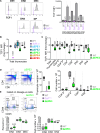
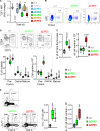

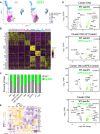
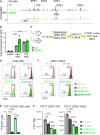
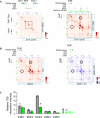

References
-
- Schilham M. W., Wilson A., Moerer P., Benaissa-Trouw B. J., Cumano A., Clevers H. C., Critical involvement of Tcf-1 in expansion of thymocytes1. J. Immunol. 161, 3984–3991 (1998). - PubMed
-
- Verbeek S., Izon D., Hofhuis F., Robanus-Maandag E., te Riele H., van de Watering M., Oosterwegel M., Wilson A., MacDonald H. R., Clevers H., An HMG-box-containing T-cell factor required for thymocyte differentiation. Nature 374, 70–74 (1995). - PubMed
-
- Zhao X., Shan Q., Xue H. H., TCF1 in T cell immunity: A broadened frontier. Nat. Rev. Immunol. 22, 147–157 (2022). - PubMed
MeSH terms
Substances
Grants and funding
LinkOut - more resources
Full Text Sources
Molecular Biology Databases

